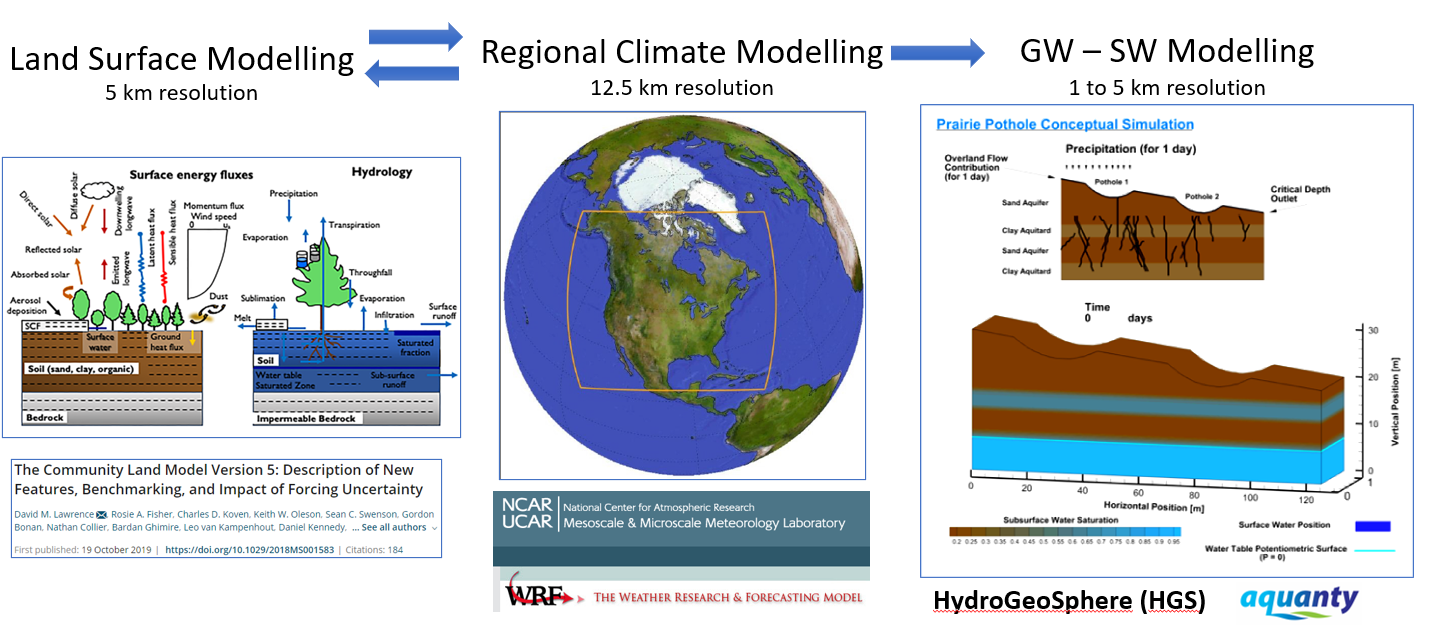WaterCanada - Les ressources en eau deviendront moins prévisibles avec le changement climatique
The Canada1Water Land <> Climate <> Hydrology Modelling Framework
Une étude du National Center for Atmospheric Research (NCAR) indique qu'à l'avenir, le débit des cours d'eau deviendra plus variable et imprévisible, même dans les régions où l'on ne s'attend pas à ce que les précipitations changent de manière significative en raison du changement climatique. Cette variabilité sera due à l'interaction entre les précipitations périodiques et le recul du manteau neigeux, qui fond plus tôt dans la saison. Les auteurs de l'étude ont utilisé le modèle communautaire du système terrestre, version 2, pour étudier comment la réduction du manteau neigeux affectera la variabilité des ressources en eau.
Canada1Water tiendra également compte des variations de l'accumulation de neige afin d'éclairer les objectifs de prévision hydrologique à long terme du projet. C1W utilisera des prévisions climatiques à échelle réduite au niveau régional (produites par le Weather Research and Forecasting Model) pour alimenter les prévisions d'accumulation de neige à l'aide de la version 5 du Community Land Model. Les estimations de l'épaisseur du manteau neigeux qui en résulteront seront appliquées (avec d'autres variables climatologiques et d'utilisation des terres) comme conditions limites dans les modèles HydroGeoSphere à l'échelle continentale.
Cliquez ici pour lire l'article sur WaterCanada.net
"De nombreuses régions de la Terre dépendent de l'accumulation de neige pendant l'hiver et de sa fonte au printemps et en été pour réguler le ruissellement et le débit des cours d'eau. Depuis des années, cependant, les scientifiques avertissent que le manteau neigeux va s'amincir et fondre plus tôt à mesure que les précipitations des mois les plus froids tomberont sous forme de pluie plutôt que de neige, et que la fonte aura lieu en hiver plutôt qu'au printemps.
"Les mesures liées à la neige sont essentielles pour informer la société sur la gestion des précieuses ressources en eau", a déclaré Keith Musselman, hydrologue à l'université du Colorado à Boulder et co-auteur de l'étude. "Alors que les services publics et les agences de travaux publics planifient de nouveaux réservoirs et d'autres infrastructures pour s'adapter au changement climatique, nous devons répondre à des questions de recherche fondamentale sur les caractéristiques changeantes du manteau neigeux hivernal et le débit des cours d'eau qui en résulte, sur lesquels nous comptons depuis longtemps".


